Space
The International Space Station
Published
10 months agoon


The International Space Station
The International Space Station, or ISS for short, is a multi-piece space structure that is placed in low Earth orbit and several elite astronauts live in it for a certain period of time, during various missions. The process of building the International Space Station started in 1998 and it is said that it can be used until 2028. As its name suggests, the International Space Station is a multinational project, and the cost of its construction and development is divided among several specific countries; But according to the statistics and evidence, it can be said that Russia and America are the main contractors of the project and provide most of the expenses related to the station. Every year, some astronauts are sent to the station and return to Earth to carry out some necessary research. The existence of the International Space Station is necessary to investigate the effects of living in space on the human body; Because soon man will travel to planets like Mars.
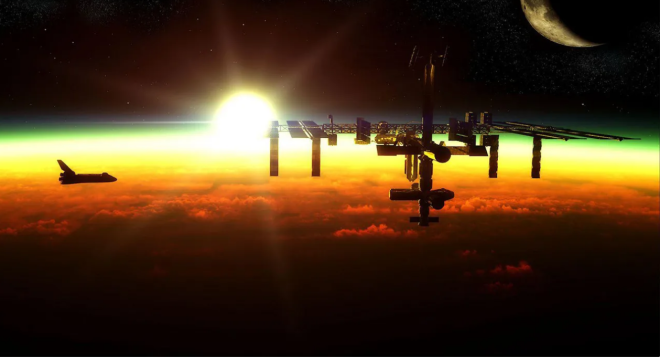

The International Space Station has been constantly being completed during its mission. The first structure of this station was launched into orbit in 1998 and the last module was installed on the station in 2011. NASA, Roscosmos (Russian space agency), Japan Space Agency, European Space Agency, and Canadian Space Agency are among the main contractors of the station and each of them has sent astronauts to the station. The budget of this station is provided internationally and the member countries are obliged to allocate a certain amount of their budget to the International Space Station every year. The cost of building the International Space Station until the moment of installation of the last module was 150 billion dollars, and for this reason, it is considered the most expensive structure of the human hand.
The International Space Station is the second home of humans in Earth orbit. People who go to the station experience zero gravity and are affected by the conditions of space. One of the reasons humans are stationed in the station is to measure the effects of space conditions on their bodies. When humans want to travel to planets like Mars, they have months to reach their destination; Therefore, during this period, they live in special conditions that will definitely have effects on their bodies. For this purpose, conducting a series of experiments in the International Space Station can reduce the risks of space travel.
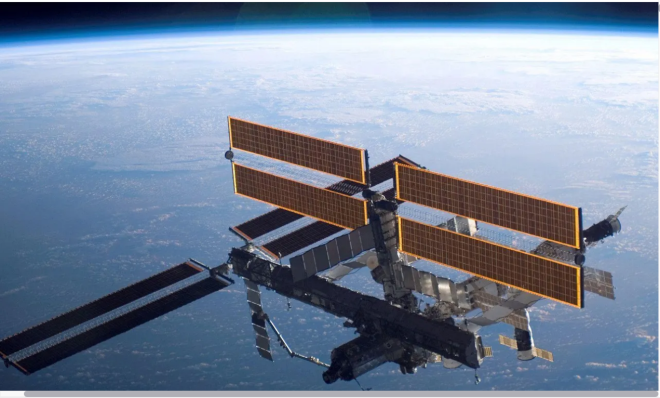

The International Space Station is not the first station to be built in the Earth’s orbit, and before that, stations such as Mir, Salyut, Almaz, and Skylab were also built in the Earth’s orbit; But ISS is the largest and most advanced of them and its mission duration is longer than others. This station has certain intricacies that make it an engineering masterpiece. In this article, we intend to put the International Space Station under the microscope and take a close look at all the details of the most expensive human structure.
Read More: Receiving a message from a distance of 16 million kilometers from the earth
History
The history of the construction and development of space stations goes back to the time of the Cold War and the height of the space competition. When the Saturn 5 rocket was being developed by America and by Dr. Werner von Braun and his group, this German engineer always had the idea of building a space residence in his mind. In the same years, in order to be able to explain this idea to people in a better way, Hanzmenda created cinematic works in which space stations were depicted. These stations were circular and rotating; Because in the hypothetical case, they should have created artificial gravity with their rotation. In these movies, many people traveled to the station and started businesses there; The ships also moved towards the station like the ships that dock at the port. A similar idea was recently portrayed in the movie Elysium.
These stations were like hotels on the way, and humans could go to the moon or Mars from there. This idea was very timeless, But that was exactly what Dr. Brown had in mind. This idea is not applicable even today despite the advances, But scientists have been able to implement the original idea of building a space station, and this work was done for the first time by the Soviet Union. The first space station was launched in 1971, and since then, the United States and the Soviet Union have always had a station or stations in orbit. The first station that was placed in the earth’s orbit was the Salyut space station (Салю́т), which was considered a military scientific project the Soviet Union was very sensitive about it and tried not to reveal any details about it and not to be available to the Americans.


After the Salyut space station, it was the Americans’ turn to enter this field. Skylab was the first American space station in Earth orbit, which was sent into space at once by the Saturn V rocket in 1973. The Salyut station was a multiple project, the first of which was called Salyut 1, and actually, this station was a combination of the Almaz and Soyuz spacecraft systems. Almaz was a military system designed for space purposes by the Soviet Ministry of Defense, But later its usage was changed and it became a part of Salyut 1 station.
After the Soyuz 11 mission, the Soviet Union launched another space station called Salyut 2, which unfortunately was unsuccessful and did not reach Earth’s orbit. After this failed mission, the Soviet Union launched the Salyut 3, Salyut 4, and Salyut 5 space stations, and after the launch, the astronauts connected to the station with the help of the Saiz spacecraft and stayed there for a longer period of time to carry out new missions. Salyut stations were only connected to Soyuz spacecraft and it was not possible to connect them to other types of spacecraft. In September 1977, the Salyut 6 space station was launched, which had two entrances and the unmanned Progress spacecraft could also dock with it. Salyut 6 continued to work until 1982, and then it was replaced by Salyut 7, which was the last station of the Salyut project.
Salyut 7 was one of the news-making and controversial stations. This station was launched in 1982 and hosted 11 astronauts for 800 days; But in the same year, the Salyut 7 accident happened and the station was out of Soviet control. The electrical system of this station failed due to the impact of several cosmic bodies, and the station began to rotate in the earth’s orbit and the process of falling towards the earth began. The Soviet Union, which was under international pressure at the time, decided to launch two astronauts on a Soyuz spacecraft during a hasty mission to manually dock the rotating station and return it to a stable state. These two Russian astronauts managed to connect to the station and recover it, and this rescue operation is one of the most impossible missions in the history of aviation. The Salyut 7 space station later paved the way for the formation of the Mir space station project.
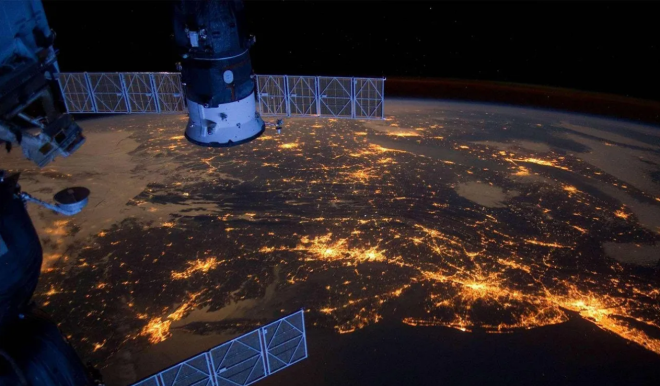

America, unlike the Soviet Union, did not invest much in the field of space stations, and before the development of the International Space Station, Skylab was the first and only American space station. Skylab was launched in 1973, But it was damaged during the launch and 2 of its solar panels were completely fragmented and another solar panel did not open completely. These events caused Skylab to have little electrical power in the circuit and the station’s temperature regulation system did not work well. To solve this problem, the United States launched the manned spacecraft Skylab 2 so that the astronauts could repair the station. These astronaut engineers were able to successfully repair the station bring it to a stable state and stay in the station for 28 days.
Orbital workshop, weatherproof module, multiple docking station, Apollo telescope unit, and Apollo spacecraft were among the constituent parts of Skylab. The Skylab 3 and 4 missions, whose crews stayed on the station for 59 and 84 days, respectively, docked with the station after the Skylab 2 mission. Skylab was not a permanent station, and the US intended to use it solely as a space laboratory to measure the effects of flights lasting a week to a month on the human body. Skylab 3 was the last mission to dock with the station, and the Skylab space station entered the Earth’s atmosphere much earlier than expected due to rapid orbital rotation caused by collision with intense solar activity and burned up in the sky over Australia.
Another space station was the Soviet Mir station, which was launched and assembled in 1986. Mir was considered the most advanced man-made space station at that time and was operational for 10 years. The first astronauts who went to the station were the same astronauts who performed the rescue operation of Salyut 7. These people stayed at Mir station for 75 days and then returned to Earth. The Mir space station consists of parts such as the life module (bathroom and kitchen, etc.), the mediating part, the assembly part, the Quantum 1 astrophysics module, the Quantum 2 airtight and scientific module, the Crystal technological module, the Specter module, the Periroda remote sensing module, The docking module was formed by the unmanned Progress spacecraft and the Soyuz spacecraft.
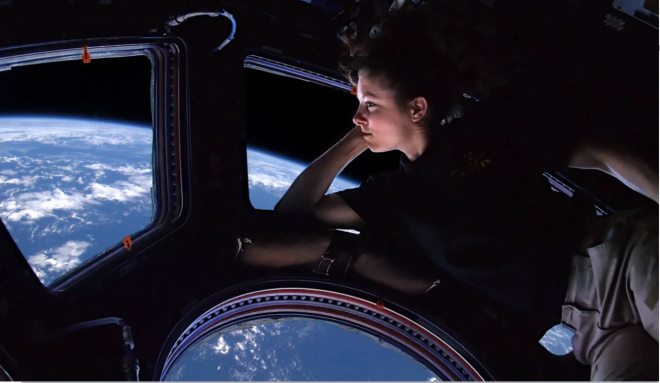

In 1994, Russia allowed the United States to allow American astronauts to spend some time at the Mir station to prepare for the International Space Station. Worried about the high costs of maintaining the Mir station, Roscosmos decided to partner with NASA; But the Russian government did not agree and said that it is better to abandon the station so that all the focus is on the International Space Station. Mir was a permanent space station, But the Russian government decided to direct it to the ground and destroy it. Finally, in 2001, the remnants of the Mir space station fell into the South Pacific Ocean.
According to the information we have obtained, we now know that the ISS is the ninth habitable space station in Earth orbit, It was developed after Diamond, Salyut, Skylab, and Mir, and perhaps inspired by them. The process of building the International Space Station began in 1998; But the first astronauts who stayed there were launched into space during the Expedition 1 mission on November 2, 2000. Since then, more than 17 years have passed and this is the longest presence of a space station in low Earth orbit. Before the International Space Station, the record for the longest stay of a space station in orbit was held by the Mir space station with 9 years and 357 days. The cargoes required for the International Space Station are transported to the station with the help of spacecraft such as Russia’s Soyuz and Progress, America’s Dragon and Cygnus, Japan’s H-II, and Europe’s transfer system. Before the cancellation of the space shuttle program, it was also possible to connect these shuttles to the station. The International Space Station has hosted astronauts, cosmonauts, and tourists from 17 different countries.
According to the contract signed between NASA and Russia’s Roscosmos, it was decided that the International Space Station will be a laboratory in low Earth orbit, where necessary investigations will be carried out to improve future space travel. NASA had predicted that humans will travel to Mars in the future and dangers are threatening them; Therefore, it is necessary to measure the results of being in space on the body in the International Space Station so that there are no problems for astronauts in future trips. In 2010, the US Space Flight Agency announced that the ISS had more potential and could be used for educational purposes and to share information with the public in the form of television programs.
Construction of the station
The construction of the International Space Station officially began in November 1998. Russia was the first country to produce the initial modules of the station, and all of these modules, except for the Razovet module, were robotically connected in space. The other modules of the station were launched by the American space shuttles and connected by the shuttle crew using the Canadarm2 robotic arm. By June 5, 2011, when the construction process of the station was completed, 159 pieces had been connected during 1000 hours of spacewalk, and this was considered a record. 127 spacewalks were performed by the station’s crew, and the remaining 32 were performed directly inside the shuttles and airlocks. Scientists on the ground had to constantly calculate the station’s beta angle and provide it to the astronauts so that the work went as well as possible. Beta is the angle between the orbital plane of a satellite and the solar radiation vector and shows how much energy a satellite receives during solar radiation to generate electricity. For the engineers who were building the station in space, the beta angle was of particular importance; Because it showed how many hours they were exposed to sunlight during the docking operation, and if the beta was not calculated, the shuttle could not be placed correctly on some modules during some limited hours.


The first module of the International Space Station is the Zarya module (Заря́) which was launched on November 20, 1998, by the Russian Proton self-propelled rocket. Zarya was a module that could provide the necessary propulsion power to be placed in the orbit, control the height, and also provide the necessary electrical power; unfortunately, it did not have enough facilities to be used for a long-term stay. Two weeks after Zarya, the United States launched the Unity module (Unity) in the STS-88 mission with the help of the space shuttle and several crew members. The Unity module was attached to the Zaria module by astronauts who performed several hours of spacewalk. Unity had two pressure-coupled adapters, one connecting to Zaria and the other to the space shuttle. At the same time, the Mir space station was still in orbit and could host the crew.
The International Space Station was uninhabitable for two years, and the Mir station was gradually decommissioned. On July 12, 2000, Russia launched the Zvezda (Zvezda) module into space. The Roscosmos space agency had planned Zivezda to deploy its solar arrays and communications antenna before connecting to Unity and Zaria. This module itself had a command center and was autonomous, But Zaria and Unity were controlled and commanded by ground stations. Zyuzda was the most advanced module to be attached to the ISS. After connecting Zyuzda to other modules, the task of controlling the overall structure of the station was taken from Zarya and given to Zyuzda. Zivzda was a large module where there were sleeping quarters for the crew, a kitchen, carbon dioxide scrubbers, humidifiers, oxygen generators, sports equipment, radio and television connected to the mission control system, etc. Zvezda was the module that made the ISS habitable for the first time.
The first crew of the International Space Station, in the form of the Expedition 1 mission and with the help of the Russian Soyuz TM-31 spacecraft, connected to the space station in November 2000. Late on the first day of the mission, astronaut Bill Shepard of NASA and cosmonaut Sergei Krikalyov of the Russian space agency, as two members of the Expedition 1 crew, announced in a radio message that they wanted to name the station Alpha. Alpha had previously been considered for the station’s naming, But America and Russia had in mind the name ISS. Now that the two astronauts had applied, NASA and Roscosmos decided to rename the Expedition 1 mission to Alpha. Shepard believed that they should name the entire station Alpha; Because alpha is always a reminder of being first. In a speech, he announced that this is the first experience of a long-term stay in space and that we are considered the pioneers of staying in space. NASA had agreed to some extent, But Russia said that this is not true and the Mir station has been habitable before, and if the name Alpha is to be chosen, Mir should be Alpha.
For two years after this mission, the station was still expanding. In 2001, a Soyuz rocket carried the Pierce Multiplexer into space. A pier is a connecting section that has vents to connect the manned Soyuz and the unmanned Progress spacecraft and acts as a trike. The space shuttles Atlantis, Discovery, and Endor also brought the Destiny Laboratory and the Quest airlock into space to dock with the station. In addition, for the first time, the Canadarm2 robotic arm and several other parts were also attached to the body of the station. Everything was going well and according to the plan until the explosion of the space shuttle Columbia disrupted the program. In 2003, the space shuttle Columbia exploded in the sky and killed all its passengers. This incident caused a two-year hiatus in NASA’s space shuttle program. The space shuttle program was suspended until 2005 when it was finally restarted with the launch of the space shuttle Discovery.
The process of assembling the modules of the space station started again in 2006 with the launch of the shuttle Atlantis in the STS-115 mission. During this mission, NASA attached the second set of solar arrays needed by the station to the main structure. The next three NASA missions also connected other body components and the third series of solar arrays to the station, and as a result, the power generation capacity of the station was completed. After Russia and America were sure about the power supply of the station, they started the process of sending the next modules. The Harmony Node and the Columbus Laboratory (belonging to the European Space Agency) were among the modules that were attached to the body of the station and other modules. Soon after the connection of these two modules, the Japanese Space Agency announced that the first part of the Kibo laboratory was produced and ready to be sent.
In March 2009, the STS-119 mission completed the construction of the subsystems and was able to install the fourth and final group of solar arrays on the hull of the station. The second and last part of Japan’s Kibo Laboratory was connected to the station by the STS-127 shuttle mission in July 2009, and then the Poisk module (По́иск), or the small research module, was launched by Russia. In February 2010, the STS-130 mission, carried by the space shuttle Endor, attached the third node, or Tranquility, to the station, along with the Cupola observation tower. A few months later, Russia also launched one of its last modules called Razvet (Рассве́т). Russia did not carry out the launch itself, but entrusted the task of the launch to the Atlantis space shuttle and paid the cost of the launch. Earlier, the US had financed the launch of the Proton rocket that launched the Zarya module into space in 1998.


On its last mission in February 2011, Discovery delivered the Leonardo Pressurization Module to the station, and in the same year, the space shuttle Endor also docked the Alpha Electromagnetic Spectrometer during mission STS-134. As of June 2011, the space station consisted of 15 pressurization modules and an integrated structure, and member states declared that all major equipment was installed on the station and that anything launched after that would be considered auxiliary equipment. Currently, 5 other modules are in the launch queue. These modules are:
- The Nauka module (Нау́ка), which is a Russian multipurpose laboratory, connects to the Zyuzda module.
- The European Space Agency’s robotic arm
- Узловой module, which is a Russian spacecraft
- NEM-1 power supply module
- NEM-2 power supply module
The Russian Space Agency has announced that the Nauka module will most likely be launched in the last quarter of this year along with the robotic arm of the European Space Agency. After the Nauka module docks with the space station, Russia will also launch the Yuzloy module to connect to one of the Nauka module’s docking ports. When these 5 modules are connected to the station, the total weight of the station will be more than 400 tons. The net weight of the station constantly changes over time; Because newer modules are always added to the station. By September 2011, when the construction of the station was completed, its total weight was 417 tons. Of course, this is considering only the weight of the station structure itself and ignoring the weight of water tanks, gas tanks, laboratory equipment, clothes and personal belongings of astronauts, food, connected spacecraft, and other things.
The International Space Station is a third-generation modular space station. A modular structure allows the body of the station to be changed to suit different missions and new parts can be added or removed from the structure. Also, the modular structure has flexibility and its shape is not static.
The main modules of the station
As mentioned earlier, the International Space Station is made up of several different modules; But some of these modules are original and other modules are installed on top of these modules. Zaria, Unity, Zyvesda, Destiny, Quest, Pierce and Poisk, Harmony, Tranquility, Columbus, Kibo, and Coppola are among the core modules of the International Space Station currently installed on the station. There are a number of other modules that are going to be connected to the station soon, which we will also mention. In the following, we will examine each of these modules and their features.
Zaria module
Zarya, which is also known by the Russian name Заря́ meaning dawn, is the first module of the International Space Station that was launched by the Russian Space Agency (Roscosmos) and placed in orbit. The task of Zaria was to provide electricity, propulsion, and positioning of the International Space Station in the early stages of construction and production. When the other modules were launched and attached to Zaria, Zaria had no special function and is now used as a storage area. Zarya is actually a more advanced version of the Russian TKS spacecraft that was used to connect to the Salyut space station. As mentioned, Zaria means dawn; Because it was supposed to usher in a new era in spaceflight. Zaria was built by a Russian company, But the main owner of that company was the United States of America.


Initially, Zaria was supposed to act as one of the modules of the Mir space station; But unfortunately, Zaria was not ready until the Mir space station was stable. Zarya has the ability to maintain a station in orbit and, due to the batteries that are placed inside its body by default, it has the ability to provide power to one or more other modules until the solar arrays are launched. Zarya weighs 19,323 kg, is 12.56 meters long and 4.11 meters wide at its widest point, and is considered a medium module in terms of size. Zarya can be connected from three different parts, one of them is located exactly in the front part, another one is in the ground part and the other one is placed in the back part. The Unity module is connected to the Zarya’s front connector with the help of a push-fit adapter. The Zyuzda module is also connected to the end of Zarya, and its ground connection valve is also connected to the Soyuz and Progress spacecraft that come to the station. Not long ago, the Razovet module was attached to the downward docking port of Zarya, and now if a spacecraft arrives at the station, it must be attached to the Razovet module first.
Zaria has two solar arrays 10.67 meters long and 3.35 meters wide and 6 nickel-cadmium batteries that can produce 3 kilowatts of electricity. Zaria has 16 external fuel tanks that can hold 5.4 tons of fuel. Zarya has 24 large thrusters, 12 small thrusters, and two large engines that were used for the station’s orbital changes. Since the Zyuzda module connected with the station, Zarya’s engines were disabled; Because with Zyuzda, Zarya engines were no longer needed. Zarya’s fuel tanks are now used as a place to store the fuel needed by Zyuzda.
On November 20, 1998, Zarya was launched by a Russian Proton rocket from the launch pad of Cosmodrome 81 in Kazakhstan to an altitude of 400 km. Zarya was originally designed to have a useful life of 15 years and be able to fly autonomously for 6 to 8 months; But due to the delay in the launch of the Zyuzda module, Zarya had to move autonomously for more than two years. At first, Zaria’s battery charging circuits had problems; But gradually these problems were solved by Russian cosmonauts.
Unity module
The Unity module, also known as Node 1, is the first American module of the International Space Station launched by NASA. Unity uses a cylindrical design and can be connected to the station and other modules from 6 separate points. Unity is 4.57 meters in diameter and 5.47 meters long and was jointly developed by NASA and Boeing at the Marshall Space Flight Center in Alabama. Unity is the first docking module of the space station, followed by Harmony and Tranquility modules.


Unity was the main cargo of the space shuttle Endor, which was launched as part of the STS-88 mission. This mission was the first space shuttle mission to connect to the station. In space, before reaching the Zaria module, the rear end of the Unity module was attached to the Endor shuttle, and then they moved towards the Zaria module until they finally managed to attach the upper part of the Unity to the front section of the Zaria. Unity has 2 axial connection systems and 4 radial connection systems, and in addition to connecting to Zaria, it is connected to parts such as Destiny Lab, Z1 Integrated Structure, PMA-3 Pressure Connecting Adapter, Quest Airtight Knee, Leonardo Multipurpose Module and Raffaello Multipurpose Module Is. During the STS-120 mission, the Harmony module was also attached to the Unity side port. Tranquility and Coppola also docked with the Unity module during the STS-130 mission.
Some of the essential resources of the space station, such as fluids, life support systems, electrical systems, and data support systems, are precisely located in Unity to provide the necessary conditions for living in different parts of the station. More than 50,000 mechanical parts, 216 liquid and gas transmission lines, and 121 hidden and covered electrical cables (6 miles of cable) have been installed in the Unity node. The overall material of the module is aluminum and stainless steel.
Zvezda module
Zvezda, also known by the Russian name Звезда́ meaning star, is a Russian command and service module. Zvezda, the third module and one of the most important parts of the International Space Station, was able to provide everything needed to support life on the station after the launch. Zvezda was launched into space by a Russian Proton rocket on July 12, 2000, and connected to the Zarya module on July 26 of the same year. The Zyvezda module was built by the Russian company RKK Energia, which is one of the main contractors of the International Space Station.
The main frame of the Zyuzda structure was first built in the mid-1980s and was to be used as the core of the Mir-2 space station. In fact, for a while, this module was called Mir-2. The construction of the main part of this frame was completed in 1985 and the equipment was installed on it in October 1986. Zyuzda has a cylindrical design and is built in such a way that the crew can live and work in it. Zyuzda has a total of four connecting valves that are used to connect to other masoles. The total weight of Zyuzda is 18051 kg and it is 13.1 meters long. Solar panels are also installed on Zivzda, which are 29.7 meters long when opened.
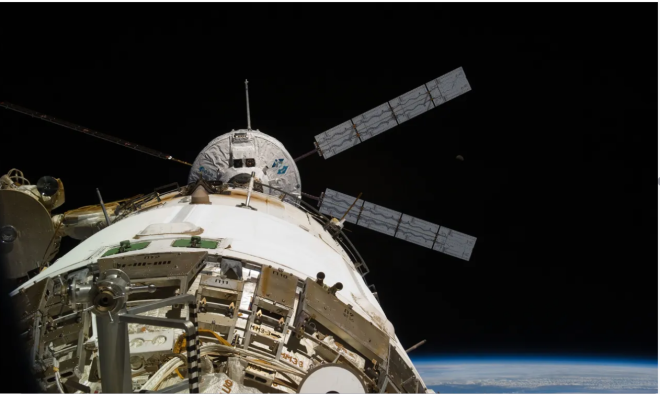

Zivzda has 14 windows, two of which have a diameter of 230 mm, and two crews sleep in the compartments. Six other windows with 230 mm diameter glass are located on the lower floor of Zyuzda and face the ground. One of the windows, which has a diameter of 410 mm, is located in the Zyuzda workshop. Other Zyuzda windows are placed in the transfer chamber and the laboratory part, respectively.
On July 26, 2000, Zyvezda successfully docked with the Zarya module, officially becoming the third module of the ISS. On September 11, 2000, the two crews of the STS-106 mission completed the final stages of connecting Zarya and Zivzda. This find was made during a spacewalk of 6 hours and 14 minutes by American astronaut Ed Lowe and Russian cosmonaut Yuri Melenchenko. They successfully connected 9 cables between Zarya and Zivzda. Zivzda was a module where there were places for the crew to sleep, a kitchen, carbon dioxide scrubbers, humidifiers, oxygen generators, sports equipment, radio and television connected to the mission control system, etc.
As Russia faced financial difficulties, it did not produce any supporting versions of Zyuzda; Therefore, the risk of launch was greatly increased. NASA decided to produce the Interim control module, which could launch this module as a backup if something went wrong during the launch. Fortunately, the launch was successful and Zyuzda did not have the slightest problem.
Destiny module
Destiny, also known as the American Laboratory, was the first American laboratory module that was attached to the space station. Dastini was connected to the Unity module by connecting valves. Destiny is NASA’s first research laboratory in Earth orbit after the destruction of the Skylab space station. The design and production of this module are under the responsibility of Boeing and the construction process of this 16-ton structure began in 1995 at the Marshall Space Flight Center. Destiny was transferred to the Kennedy Space Center in Florida in 1998; But due to interruptions in NASA’s plans and conducting a series of necessary tests, the launch was postponed until 2000. The Destiny Module was launched into space on February 7, 2001, by the Space Shuttle Atlantis as part of the STS-98 mission.


On February 10, 2001, Destiny arrived at the space station and was docked with the Unity module by the Canadian of the space shuttle Atlantis. Destiny has an aluminum structure and uses a cylindrical design. This module is 8.5 meters long and 4.3 meters in diameter. The front part of Destini is connected to the Unity module and its end part is also connected to node number 2. A glass window with a diameter of 510 mm is also placed on one side of the door that has a view of the ground. Destiny’s total weight is declared as 14520 kg, which is considered average.
Quest module
The Quest airlock knee, formerly known as the airlock knee module, is the first airlock of the International Space Station. Quest is designed in such a way that astronauts can enter space directly in space and stabilize the air pressure. In this airlock, astronauts can enter in Russian and American clothes and there is no problem in this regard. Until the launch of this module in 2001 and in the form of the STS-104 mission, Russian astronauts who used their special suits had to enter the station through the Zyuzda module, and American astronauts only entered the space shuttle connected to the station. The station could enter the interior of the station.


The Quest module consists of two main parts; One for keeping the spacesuits and the other for when the astronauts want to leave or enter the station. These two parts are completely isolated from each other. It was necessary to build the quest module; Because the American astronauts, who had their own spacesuits, could not enter the station through the Russian Mazul Zyuzda airlock, and it was not possible to enter from other parts either.
Pierce and Poisk modules
Пирс and По́иск are two Russian airlock modules, each of which has two different valves. Pierce was launched in August 2001 and provided a docking station for the Soyuz and Progress spacecraft. It also made it possible for Russian cosmonauts wearing Orlan-designed spacesuits to enter and exit the station. Pierce was supposed to be separated from the station by the Progress spacecraft in 2017 and fall towards the Earth to make room for the Russian Nauka laboratory; Lamel, due to the delay in the construction of the Naoka laboratory, the separation process of Pierce was also postponed until the end of 2018.
Poisk is another Russian docking module that was launched and attached to the station in 2009. Poisk was the first Russian module of the station to be launched after 2001. Poisk generally uses Pierce’s design. Pierce is connected to the lower part of the Zyuzda module, But Poisk is attached to its upper part. Poisk in Russian means search and discovery, and for this reason, it has a series of scientific tools and equipment.
Harmony module
Harmony, also known as Node 2, is the second American node of the International Space Station. This module has the ability to provide electricity and electronic data of the bus, and due to having 6 connection valves, it can be connected to different parts of the station. European Columbus module, Japanese Kibo Labs connected to Harmony Radial Valves. Harmony’s upper and lower hatches are also used to dock spacecraft arriving at the station. Dragon, Cygnus, and HTV spacecraft are typically attached to these vents. By 2011, space shuttles were also docked at the bottom of Harmony.


This module was initially known as node number 2; But in March 2007, NASA named it Harmony. At that time, NASA held a name competition among 32 American states, in which 2,200 kindergartens participated, and Harmony was chosen among the proposed names. At that time, NASA presented the children with information about the space station and asked them to build a small model and choose a name for it. Harmony in the term means the center that hosts scientific works. Harmony was launched on October 23, 2007, as part of the STS-120 mission and arrived at the station 3 days later.
Tranquility module
Tranquility, also known as Node 3, was built by the European Space Agency and the Italian Space Agency. In February 2010, NASA sent this module into space with the help of a space shuttle. The task of controlling and commanding this module was assigned to NASA from the very beginning. This node has 6 connecting valves, But one of them is still inactive because the rocket it was supposed to connect to was never launched.
In this node, more necessary life support equipment is placed and there is also a water purification system. The water purification system of this node can turn the astronauts’ urine into drinking water again if needed. The crew can use the oxygen generators in this node when necessary. The connecting valves of this node are each connected to a part. The first valve is connected to the Unity module, the heart of the station, and the others are connected to the Assonardo module, the Bigelow expandable module, the pressure connection valve number 3, and the Copola module.
Columbus module
Columbus is the first European research laboratory of the space station. In this module, there is a small laboratory and facilities for biological research and fluid physics. Several special bases are placed on the outside of this module, on which equipment can be installed to provide data and electrical energy necessary for external laboratory equipment. The European Space Agency plans to expand the space station to study quantum physics and cosmology. The European Space Agency is always trying to improve the life support systems of this module and make it still usable for the next 20 years.


Kibo Laboratory
Kibo is a Japanese laboratory and also the largest module of the International Space Station. Scientists use this laboratory to study space medicine, biology, earth observation, materials production in space, biotechnology, and the development of communication technologies. In this laboratory, there is equipment that can be used to grow flowers in space. In August 2011, the MAXI observatory was installed on the Kibo module. The observatory uses the orbiting orbit of the space station to take X-ray images of the entire sky. This observatory was able to observe a star being swallowed by a black hole for the first time.


This module consists of 23 different sections, 10 of which are laboratory sections. This module also has an air seal for testing. Another pressurized module is attached to the top of the Kibo, which mostly serves as a compartment for additional equipment.
Copula module
The cupola is an observatory that has 7 windows and is used to observe the Earth and connect other spacecraft. The name of this module is inspired by the Italian word copola which means dome. The construction of the Coppola module was done by NASA and Boeing; But due to lack of funds, the work was stopped. Sometime later, in an agreement between NASA and the European Space Agency, this organization agreed to pay part of the cost, and thus the construction process resumed in 1998.


Boeing was no longer the contractor for this project and its construction was handed over to the Italian Space Agency. This module has 7 small glass windows and a circular window with a diameter of 80 cm, which is the largest window of the space station so far.
The future of the station
As it was said at the beginning, the station is supposed to remain operational until 2028; on the other hand, NASA will probably stop cooperating with the project until 2024, and stopping NASA’s cooperation will probably mean the end of the space station. It was in 2014 that the US Congress announced that it had to decide on the International Space Station and see if it could still be funded. Finally, in the same year, Congress announced that it would retire the International Space Station in 2024 and not fund it. With these interpretations, there are only six years left in the life of the International Space Station; Only seven years, and then it is not clear what is going to happen.
NASA spends the other half of its budget on rover missions, sending humans to Mars or sending to an asteroid. If NASA is to expand its projects and enter space exploration into a new field, it will no longer be able to allocate three to four billion dollars of its annual budget to the International Space Station. Of course, this is not a decision made by NASA; Rather, Congress and especially the White House decide how much funding NASA receives.
As mentioned at the beginning, one of the ways that NASA can investigate how to send humans to other planets is to test this work on the International Space Station. This station has a microgravity environment (weightlessness of humans and other objects) and is outside the Earth’s atmosphere; This means that scientists of all sciences can conduct their own experiments on the station to observe the effects of space on everything. Also, in this station, the effects of long-term human stay in a zero-gravity environment are measured. Recently, some politicians have said whether all the funds allocated to the International Space Station were worth it or not; Unfortunately, it seems that the United States Congress does not have a very good record of supporting applied sciences.


No one is saying that the International Space Station should be supported and funded forever. With the growing private sector and large companies such as SpaceX, Blue Origin, and Virgin Galactic, we hope that one day the International Space Station will be supported by the private sector. There are some companies that are interested in making equipment for use in space; These companies can pay huge sums of money just to be able to test their equipment on the International Space Station. Maybe Elon Musk will decide to add this station to his company’s subsidiary; no one knows However, in the next two years, 5 more modules will be connected to the International Space Station, which will be used for different applications; But different countries are still waiting for NASA’s green light for the station to be operational by 2028.
Cost
As mentioned at the beginning, the International Space Station is the most expensive man-made integrated structure. In 2010, it was announced that the total cost of the station is likely to be around $150 billion, of which $72.4 billion belongs to NASA. The Russian Space Agency spent $12 billion, the European Space Agency $5 billion, the Japanese Space Agency $5 billion, and the Canadian Space Agency spent $2 billion to build the station. The cost of launching each shuttle was 1.4 billion dollars, and by calculating the 36 launches and the cost of construction, it can be said that this process alone cost 50.4 billion dollars. With another calculation, we can find out that in 15 years, the daily cost of each crew member at the station was 7.5 million dollars.
Interesting Facts
- 16 countries are members of the International Space Station project. These countries are the United States of America, Russia, Canada, Japan, Belgium, Brazil, Denmark, France, Germany, Italy, Netherlands, Norway, Spain, Sweden, Switzerland, and the United Kingdom.
- The International Space Station orbits at a speed of approximately 8 kilometers per second, which means that the space station orbits the Earth once every 90 minutes.
- You might think that your apartment or house has more space than the space station, But it is interesting to know that this station has a total length of 109 meters provides a lot of space for the crew and has a lot of rooms.
- The International Space Station is the largest man-made structure in space and has a total of 1141829 cubic centimeters of internal space.
- There are only two toilets throughout the station. The water used in these services, together with the astronauts’ urine, is re-purified and turned into drinking water.
- Being in space does not mean being safe from computer viruses. There are 52 computers in the space station, each of which has been infected with the virus more than once. For the first time, these computers were infected with a worm designed to steal computer game passwords.
- The International Space Station is the only place in space where you can smell the smallest things. One of the astronauts said that he felt a special smell like the ionization of metal. Such a smell is rarely felt on earth.
- The International Space Station is the brightest object in the night sky after the Moon and Venus, and if the weather is clear, you can see the space station with the naked eye.
- Being in space destroys bone tissue and muscles. Therefore, astronauts should exercise two hours a day to avoid any problems.
- In total, 12.87 kilometers of cables have been used in the space station, which is more than the cables used in New York’s Central Park.
- Astronauts eat only three meals a day and do not know if they are sitting or not while eating; Because sitting in the space makes no sense at all, and there are no special seats in the station’s kitchen.
Conclusion
In general, it can be said that the International Space Station is a masterpiece of human engineering in space. This station was built thanks to the great experience of Russia and America and it allocates a lot of budget annually. The existence of this station in the Earth’s orbit is very necessary; Because in the near future, humans will travel to the moon, Mars, and other planets, and they must make the necessary preparations in the space station. It is still unclear what will happen to the International Space Station and what NASA will decide about it.
With the growth of private organizations such as SpaceX, it seems that this project will be left to the private sector and NASA will focus on other sectors. However, the space station is currently the only place in space where humans can go; Because humans haven’t left Earth’s lower orbit for almost 50 years.
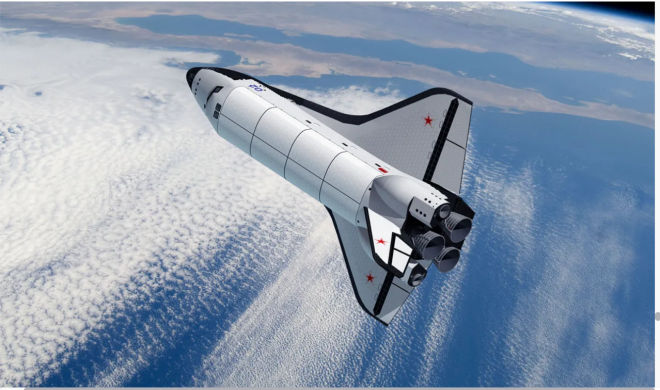

The International Space Station owes its existence to stations such as Salyut, Almaz, Mir, and Skylab, and maybe if these stations were not built, the ISS would not have progressed to this extent. Of course, we should not forget Dr. Werner von Braun, the creator of the Southern 5 rocket; Because he proposed the idea of building a space station for the first time. We are still in the early stages of space station development. The International Space Station has made significant progress over Salyut, Skylab, and Mir; But we still have a long way to go to make the big space stations and colony-centered ones a reality as written by science-fiction writers.
It seems that in the future space stations will have artificial gravity, and none of our stations currently have gravity. Another reason is that we lack the technology to actually spin a massive system like a space station, so we can’t create artificial gravity.


You may like
-

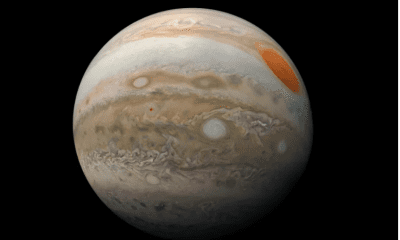


Why is Jupiter not a star due to its large size?
-




Why doesn’t Jupiter have big and bright rings like Saturn?
-




Why do none of the moons of the solar system have rings?
-




Most alien planets probably do not have day or night
-




The biography of Edwin Hubble
-




Can telescopes see astronaut footprints on the moon?


Why is Jupiter not a star due to its large size?
The smallest known main-sequence star in the Milky Way is a red dwarf called EBLM J0555-57Ab, located 600 light-years from Earth. With an average radius of nearly 59,000 kilometers, this star is only slightly larger than the planet Saturn. Therefore, this red dwarf is the smallest known star that has hydrogen fusion in its core; The process that provides the star’s energy to burn until the end of its life.
In the solar system, there are two objects bigger than the mentioned star. One of them is the sun; But the other is the planet Jupiter , whose radius reaches 69,911 kilometers; But why is Jupiter a planet and not a star according to these dimensions?
The answer to the above question is simple: Jupiter does not have enough mass to support the hydrogen-to-helium fusion process. The star EBLM J0555-57Ab is nearly 85 times more massive than Jupiter. If this star was a little lighter, it would not be able to perform the hydrogen fusion process; But if the solar system had a different structure, would it be possible for the planet Jupiter to shine as a star?
Jupiter and the Sun are more similar than you might think
Jupiter may not be a star, but it has a huge influence on the solar system. The mass of this gas giant is 2.5 times the total mass of other planets in the solar system. On the other hand, Jupiter has a low density of 1.33 grams per cubic centimeter. While the density of the Earth is close to 5.51 grams per cubic centimeter, which is four times more than the density of Jupiter.
But it is interesting to point out the similarities between Jupiter and the Sun. The density of the sun is 1.41 grams per cubic centimeter. These two crimes are also very similar in composition. In terms of mass, nearly 71% of the sun is made up of hydrogen and 21% of it is made up of helium, and traces of other elements can be seen in it. On the other hand, 73% of Jupiter is made of hydrogen and 24% of it is made of helium.
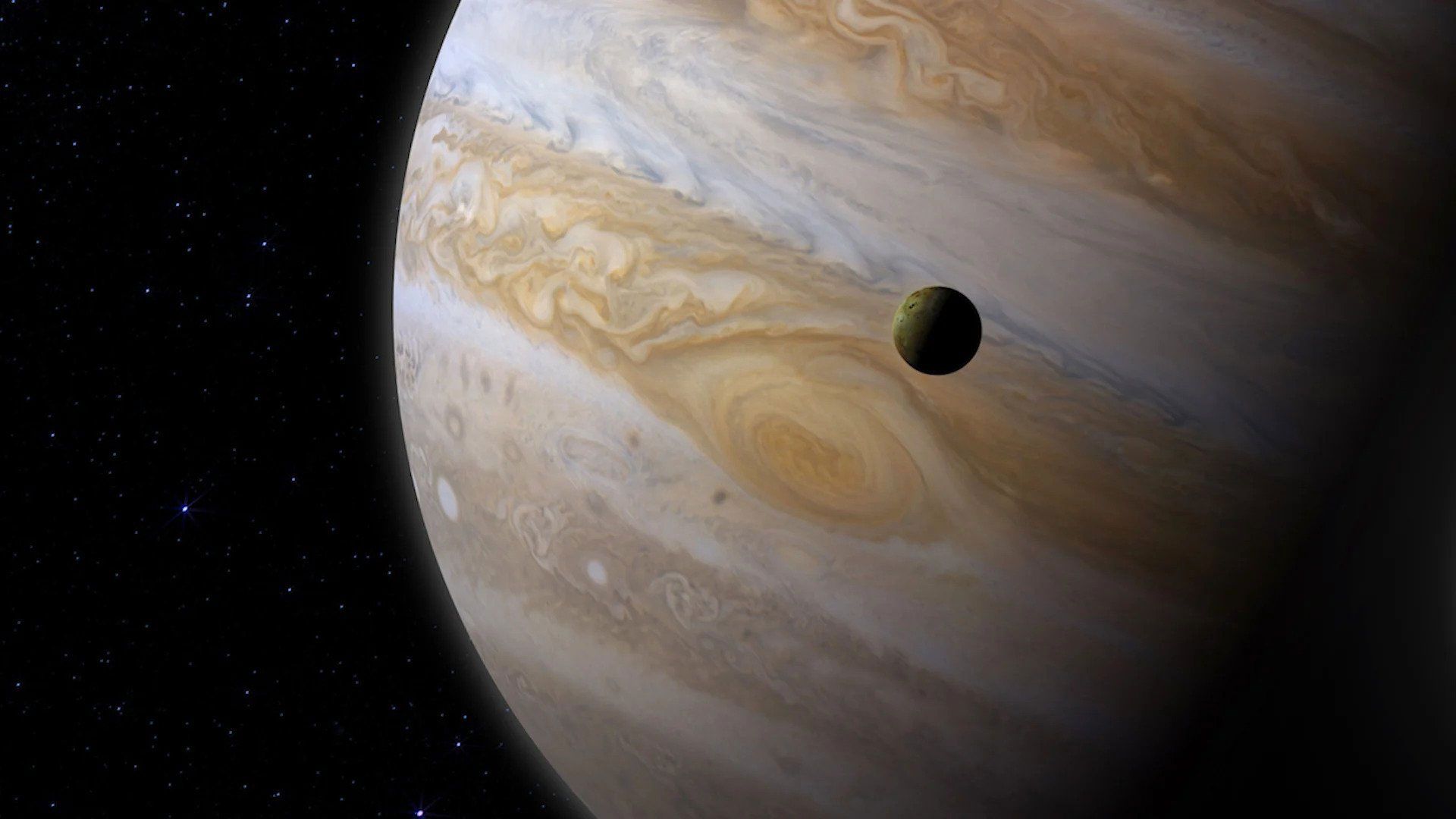
Illustration of the planet Jupiter and its moon Io
For the above reasons, Jupiter is sometimes called a failed star; But again, Jupiter is unlikely to even come close to being a star. Stars and planets form in two completely different mechanisms. Stars form when a dense knot of matter in an interstellar molecular cloud collapses under its own gravity. This material begins to rotate in a process called cloud collapse. As rotation continues, more material from the surrounding cloud enters the stellar accretion disk.
With the increase in mass and as a result of gravity, the core of the baby star becomes more and more compact, which causes the temperature to increase and make it hotter. Finally, this mass becomes so compressed and hot that its core ignites and the process of thermonuclear fusion begins.
Based on our understanding of the star formation process, when a star runs out of accretion material, a full portion of its accretion disk remains. Planets form from this residue. According to astronomers, for gas giants like Jupiter, this process, called accretion, begins with small clumps of icy rocks and dust in the disk. With the rotation of these materials around the baby star, their density starts gradually and they stick to each other with the force of static electricity. Finally, these growing masses reach the size of nearly 10 times the mass of the earth; So that they can gravitationally absorb more gases from the surrounding disk.
From this stage, the gradual growth of the customer and its current mass began. The current mass of Jupiter is 318 times the mass of the Earth and 0.001 times the mass of the Sun. When a gas giant absorbs all its available matter, its growth stops. As a result, Jupiter has never even approached the mass of a star. The reason why Jupiter’s composition is similar to the Sun is not that it is a failed star; Rather, the reason for being born in the molecular gas cloud is the same as the sun.
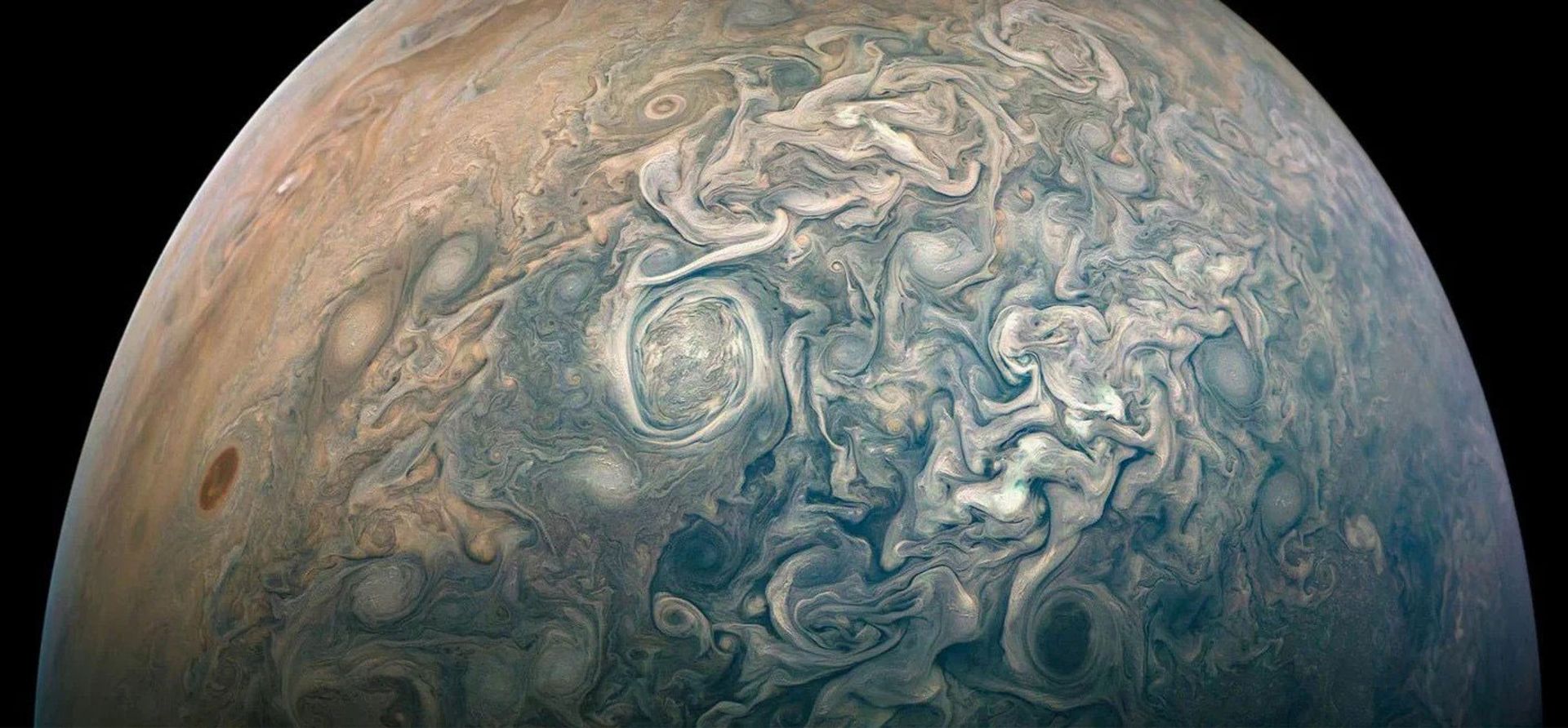
Real failed stars
There are different groups of objects that can be classified as failed stars. These objects are called brown dwarfs and can fill the gap between gas giants and stars. The mass of brown dwarfs starts at 13 times the mass of Jupiter. These objects are heavy enough to support nuclear fusion, but this fusion is not of ordinary hydrogen but of deuterium or heavy hydrogen. Deuterium is an isotope of hydrogen that has one proton and one neutron in its nucleus instead of just one proton. The temperature and pressure of deuterium fusion is lower than the temperature and pressure of hydrogen fusion.
Since deuterium fusion occurs at lower mass, temperature and pressure, it is one of the steps to reach hydrogen fusion for stars whose accretion process continues and absorb the surrounding mass; But some objects never reach the required mass for hydrogen fusion.
Shortly after the discovery of brown dwarfs in 1995, these objects were called failed stars or ambitious planets, but numerous studies show that the formation of these objects like stars was from cloud collapse, not core accumulation; Some brown dwarfs do not even have enough mass to fuse deuterium, making them difficult to distinguish from planets.
Jupiter has exactly the lower mass limit for cloud collapse; The minimum mass required for cloud collapse is approximately equal to the mass of the planet Jupiter. As a result, if the planet Jupiter was formed from the collapse of a cloud, we could place it in the group of failed stars; But data from NASA’s Juno probe suggests that Jupiter at least once had a solid core, which is more consistent with the theory of core formation.
Modeling shows that the upper limit of planetary mass and formation by core accretion method is less than 10 times the mass of Jupiter. As a result, the planet Jupiter is not included in the group of failed stars; But by thinking about the cause of this issue, we can get a better understanding of how the universe works. In addition, the planet Jupiter has a stormy, striped and twisted appearance, and the existence of humans would probably not be possible without this gas giant.
Space
Why doesn’t Jupiter have big and bright rings like Saturn?
Published
2 hours agoon
20/09/2024

Why doesn’t Jupiter have big and bright rings like Saturn?
Considering the similarity of the planet Jupiter to its neighbor Saturn, it is natural to ask why this planet does not have clear and bright rings like Saturn. However, Jupiter has thin, narrow rings made up of dust that only shine when there is sunlight in the background. According to new research, these narrow rings lack brightness because the large Galilean moons prevent rocks and dust from accumulating around Jupiter. According to Stephen Kane, an astrophysicist at the University of California Riverside:
The fact that Jupiter doesn’t have brighter rings than Saturn has bothered me for a long time. If Jupiter had such rings, it would certainly appear brighter to us because this planet is much closer to Earth than Saturn.
Keen and his colleague Zhixing Li, an astrophysicist at Riverside University, ran a series of simulations of objects orbiting Jupiter to test the hypothesis of a giant ring system around Jupiter at some point in history. The aforementioned simulations considered the orbital motion of Jupiter and its four largest moons, known as the Galilean moons, which are: Ganymede (which is even larger than Mercury and is known as the largest moon in the solar system), Callisto, Io, and Europa. The researchers also included enough time for the formation of a ring system in their simulations. According to this modeling, Jupiter has not even had rings similar to Saturn in the past and is unlikely to have them in the future. Kane explains:
Giant and heavy planets have heavy moons and these moons prevent the formation of rings of matter. The Galilean moons of Jupiter, one of the largest in the Solar System, would quickly destroy any potential large rings that might be forming.
Jupiter has narrow rings, most of which are dust from moons and material that may have been thrown into space by impact events. On the other hand, much of Saturn’s rings are made up of ice, possibly fragments of comets, asteroids, or icy moons that have been broken apart by Saturn’s gravity.
We know that Saturn’s moons play a vital role in the formation and maintenance of its rings, But one or more large moons can also gravitationally disrupt the rings and drive the ice out of the planetary orbit and into an unknown region. Although most people think that Saturn is the only planet with rings, rings around planets are very common even in the solar system. For example, in addition to Jupiter, the solar system’s ice giants Uranus and Neptune both have narrow rings of gas and dust.
Compared to other planets, Uranus has a strong axial deviation and its orbital axis is parallel to the orbital plane. The position of the rings of this planet is adjusted accordingly. Probably, a mass collided with Uranus and led to its axial deviation, or possibly this planet once had huge rings that caused this deviation. Of course, rings are not limited to planets. A small body with a width of 230 km called Chariklo, which is located in the orbit between Jupiter and Uranus, also has rings.
Also, the dwarf planet Haumea in the Kuiper belt has a ring. Simulations show that rings around ice masses are common due to the gravitational interaction and removal of ice from these masses.
Mars is also likely to be ringed in the future. The moon of Mars, Phobos, comes a little closer to this planet every year. Over the next hundred million years, the moon will come close enough to Mars that the planet’s gravity will break it apart, forming a short-lived ring that may recondense into a moon. Even Saturn’s rings may be temporary and rain down on the planet in the future. If we can study the rings in great detail, we can use them to fit together the puzzle pieces of planetary history. Kane believes:
To us astronomers, the rings are like bloodstains on a crime scene wall. When we look at the rings of the giant planets, we find evidence of the events that caused this material to accumulate.
Anyway, now that Jupiter has no spectacular rings, let’s enjoy Saturn’s rings. The Planetary Science Journal has accepted this research and is available on the arXiv database.


Why do none of the moons of the solar system have rings?
We have many strange moons in our solar system. hot and cold moons; Moons with liquids and dusty moons. One lunar planet is walnut-shaped and another is potato-shaped; But among almost 300 moons that have been discovered so far, not even one of them has rings. This is really strange.
Of the eight planets in the solar system, half have rings of dust and ice that orbit their equator. It is thought that Mars once had a ring, and according to new research, even our blue planet probably had a ring similar to Saturn’s ring about 500 million years ago, which lasted for tens of millions of years.
In addition, some dwarf planets also have rings; Although astronomers have not yet been able to understand how these rings are formed. Even some asteroids have their own rings.
While investigating the concept of ringed moons outside our solar system, Mario Socercchia, an astrophysicist at the Universidad Adolfo Ibánez in Chile, and his colleagues became involved in the question of why moons in our own cosmic neighborhood lack rings. In an interview with Science Alert, he explains:
If the giant planets of the solar system have rings, and if the asteroids beyond the orbit of Jupiter and the non-Neptunian bodies also have rings, why don’t the moons of the solar system have rings? This absence is illogical considering the presence of rings in other places. As a result, it is better to investigate whether there are underlying dynamical reasons that prevent the formation of rings or their long-term stability around moons.
 James Webb Space Telescope image of the rings of the planet Uranus.
James Webb Space Telescope image of the rings of the planet Uranus.
We have yet to definitively discover an extrasolar moon, but in 2021 Soserkia and his colleagues hypothesized that if a moon had a large ring system, it could engineer its existence by blocking enough starlight. But the group later realized that we have yet to see any ringed moons, so the likelihood of their existence is very low.
When you’re an astronomer with a question in mind and a simulation tool at hand, there’s only one thing you can do: build models of cosmic systems and see what happens when you set them in motion.
There are many raw materials from which rings can form around the moons of the solar system. Some of these materials are dust resulting from the formation of impact craters. Some other moons emit steam or gas of their own, so there seems to be no problem with ring formation.
Considering the gravitational influence of the moon, host planet and other moons, researchers designed and tested physical N simulations and realized that due to these variables, ring formation around moons is difficult.

For example, Saturn’s moon Enceladus releases water vapor, ice particles, and gases from its glaciers in the Antarctic region with its remarkable surface activity. However, instead of forming a ring around this moon, these materials are transported into Saturn’s orbit by strong interactions with neighboring moons, feeding Saturn’s E ring.
In other words, even though the moons produce part of the raw materials necessary for the ring, their surrounding environment makes a large part of these materials available to the host planet and prevents the formation of the ring around the moons themselves.
So far, NASA has discovered 293 moons in the orbit of the planets of the solar system, most of which belong to the planets Jupiter and Saturn. Also, moons around dwarf planets and even asteroids have been discovered.
Soserkia and his team simulated the moons of a variety of solar system objects, from the Earth’s moon to the larger moons of Jupiter and Saturn, over millions of years of evolution. They sought to investigate the stability of these objects, their gravitational environment, possible ring systems, and their changes over time. The results of the investigation were contrary to the expectations of the researchers. Susarkia explains about this:
At first I expected rings to be completely unstable, which directly answered our question. However, contrary to expectation, we found that these structures have maintained their stability in many conditions. Indeed, in a previous paper we showed that isolated moons can have stable rings, but we did not predict that moons would remain stable in harsh gravitational environments despite the large number of other moons and planets that have distributed their rings. Another surprise came when we realized that these harsh environments, instead of destroying the rings, beautified them by creating structures like cracks and waves, which were just like what we see in Saturn’s rings.
 Saturn’s moon Iapetus with its prominent equatorial ridge.
Saturn’s moon Iapetus with its prominent equatorial ridge.
Some features of the moons of the solar system are signs of the past of the rings. The simulations suggest that the pebbles found orbiting Saturn’s moon Rhea could be the last remnants of a complete ring system. Also, Saturn’s moon Iaptus has a equatorial groove, which could be the remnant of a ring that fell on this moon, and in this sense, it is just like Saturn’s rings that slowly fall on this gas giant.
The findings show that the reason we do not see rings in the solar system today is that we are not in the right time and place. Solar radiation pressure, magnetic fields, internal heating, and magnetospheric plasma all contribute to the loss of once-existing lunar rings. According to Susarkia:
I believe we are unlucky to some extent; Because we started observing the universe during a period when these structures no longer exist. After doing this research, I was convinced that these rings probably existed in the past.
On the other hand, the only reason we see Saturn’s rings is because we are in the right place and time. For this reason, we see solar and lunar eclipses; Because the moon is gradually moving away from the earth and at some point it will be so far that it can no longer completely cover the sun.
 The glory of Saturn’s rings.
The glory of Saturn’s rings.
The researchers believe that further simulations that take into account more parameters, such as beam pressure and magnetic fields, can help us understand the absence of lunar rings in more detail. We should also look more closely at the moons and look for evidence of the past, such as the craters on Iaptus.
At the same time, Suserkia and his colleagues are looking to expand their search and look for moons of rings around alien extrasolar worlds. He explains:
I wonder what mythical and epic stories we will hear from the inhabitants of other worlds about ringed moons. I mean, how will their stories and culture about the moons of the rings be different from our stories? There are infinite possibilities.
The scientists’ research has been accepted for publication in the Journal of Astronomy and Astrophysics and is available in the archive database.


Why is Jupiter not a star due to its large size?


Why doesn’t Jupiter have big and bright rings like Saturn?


Why do none of the moons of the solar system have rings?


The biography of Andy Rubin, the creator of Android


How to prevent your location from being revealed through photos?


How to use iMessage on Android?


Xiaomi Glorimi M2 Max watch review; Alternative economic option for iPhone owners


Ten strange moons of the solar system


Why do we humans sleep?


What is the difference between the brain of athletes and the brain of normal people?
Popular
-



 Technology1 year ago
Technology1 year agoWho has checked our Whatsapp profile viewed my Whatsapp August 2023
-



 Technology1 year ago
Technology1 year agoSecond WhatsApp , how to install and download dual WhatsApp August 2023
-



 Technology1 year ago
Technology1 year agoHow to use ChatGPT on Android and iOS
-



 AI2 years ago
AI2 years agoUber replaces human drivers with robots
-



 Technology1 year ago
Technology1 year agoThe best Android tablets 2023, buying guide
-



 Technology1 year ago
Technology1 year agoThe best photography cameras 2023, buying guide and price
-



 Humans2 years ago
Humans2 years agoCell Rover analyzes the inside of cells without destroying them
-



 Technology1 year ago
Technology1 year agoHow to prevent automatic download of applications on Samsung phones
